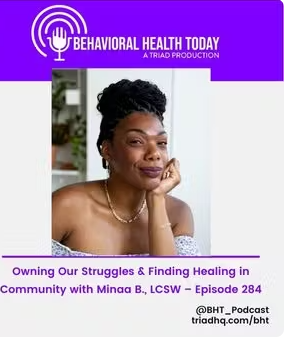5 changes every therapist should make to their website to get more clients
5 changes every therapist should make to their website to get more clients
In today’s digital world, it seems like every therapist on the block has a website. So, what do you do to stand out in that crowd? How do you inspire your dream client to reach out and become YOUR client? Here are a few quick things you can do on your existing website to make that a reality.
1. Give people as many ways as possible to get in touch.
Did you know that 97% of visitors leave a website without doing anything?
Quite often, the difference between a successful intake and a lost lead can be how easy you make it to get in touch. By giving visitors multiple ways to reach out on every page, you can lower that percentage.
Here are a few things that every page on your website should have:
- Links to your social media profiles
- A newsletter signup
- Your phone number and location
- A chat function (if that resonates with you)
- At least one contact form
In my 13+ years of helping therapists grow their practices online, I have found that adding a contact form to every page of your site can more than double the number of leads you’re getting.
Think about the mindset of a potential new therapy client. Maybe they have been considering therapy for some time now. Or, maybe something reached a boiling point last night and they realized it was time to finally reach out and ask for help.
That’s why it’s essential to have a contact form on every page of your site. Preferably, the form will be in a prominent part of the page with a clear call to action. That said, it’s better to have a simple and unobtrusive contact form at the bottom than to have no form at all.
2. Create a personal connection by using “you” statements.
Every product, service, and business can be better promoted by making the customer feel like you “get them.” The most powerful way to do this is to talk about them first, you later.
When creating copy for your website, many therapists fall into a familiar trap: writing as if the reader is an expert in psychopathology. This can manifest itself in pages full of big words, technical jargon, and “me statements.”
In reality, the key to a successful therapist website is taking yourself almost completely out of it (except on your about page, of course).
Put yourself in their shoes — imagine you’re a potential patient. You’ve finally admitted that you need help and have taken the brave first step of Googling “therapists near me.” You may be hurt, scared, nervous, anxious, excited … and you’re desperately looking to find someone who “gets you.”
These are the kind of words that connect with people. Think about what you say in an intake call – then write it down on your site.
Here’s a guide to help you write amazing copy for your therapist website.
3. Make sure your website works on all devices
More than 52% of all web traffic comes from mobile phones. When you add in tablets and other devices, that means that a minority percentage of people are actually looking at your site from their laptop or desktop (which is what you probably used to design it).
As a therapist, that means you need to make sure your site connects with your dream client on whatever device they are using. There’s no point in creating a beautiful site that only looks good for some people – especially when the same person may be looking at the site in multiple ways.
The good news is that most modern web development software or websites (e.g., Squarespace, Weebly, Wordpress) offer responsive design built into their framework. That way, you can focus on the desktop version and know that it should look good on all other devices.
4.Turn your resources page into a blog
Therapists are the nicest people! You give and you give – both during therapy sessions and in life in general. That’s why it’s no surprise that so many therapist websites provide a resources page full of links to organizations, self-help books, and more. The problem is, this display of generosity is actually hurting your ability to turn your site’s visitor into a paying patient.
Why? Because most resources pages take the visitor off of the site. Your goal should be to get people to visit as many pages as possible on your site – not someone else’s.
Now, I know that this suggestion often gets pushback from therapists when I suggest it. And I understand why. The thinking is, “if they can’t get (or afford) the help they need from me, I want to point them in the right direction.”
By no means am I disagreeing with that. In fact, I still want you to have a resources section. However, it should be part of an actively updated blog. That way, people can find what they need and still be within the framework of your site.
Plus, each individual resource is a great excuse to write 800+ words on the topic. That way, your blog is providing a resource in itself AND offering people outside ways to get help.
5.Replace “walls of text” with beautiful pages
You know your practice better than anyone … and probably want to share lots of info about what you do and why you’re the best. This often leads to pages that are full of text with no breaks for the reader. These are overwhelming and make people go running for the hills.
So what do you do when you want to write a page with 1,000+ words? You break it up with colorful call-outs, photos, sections, and other design techniques.
People tend to scan a page in an F-shaped pattern: two horizontal stripes, one on top of the other, and a vertical stripe running down the left side. You can use images to grab their attention as they scan, hopefully enticing them to stop and delve deeper into the text.
About the Author:
 Greg Goodman has been helping therapists get more business online since 2006. His company, Goodman Creatives, specializes in therapist web design, marketing, and coaching.
Greg Goodman has been helping therapists get more business online since 2006. His company, Goodman Creatives, specializes in therapist web design, marketing, and coaching.
By using a compassionate approach, Greg makes the entire process fun, easy, and collaborative ... which is important, because getting more clients online can sometimes feel completely overwhelming.
To discover how Greg can help grow your practice, please visit www.GoodmanCreatives.com









